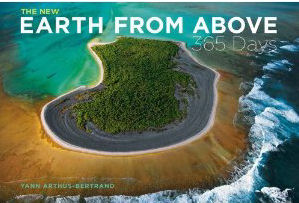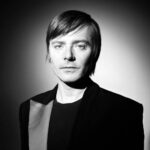 By Jae-Ha Kim
By Jae-Ha Kim
Chicago Sun-Times
June 21, 2002
In 1976, Yann Arthus-Bertrand was a journalist dabbling in photography. Then 30, the Frenchman, his wife and their two small children moved to Kenya to study the behavioral patterns of the lions living on the Masai Mara reserve.
“At this time, I was mainly a journalist,” says Arthus-Bertrand, phoning from New York. “But I began to understand there was a lot I could do with photography that I can’t do with text. My wife and I began collaborating–me doing the photography and she writing the text.”
To pay the bills, he took a day job guiding tourists around in a hotel’s hot air balloon, showing them elephants and lions from a safe distance. He also started photographing the lush environment from above.
“I discovered how important aerial photography could be, and what an interesting, new dimension it could add to a story. It has been a passion ever since.”
That passion has become the artist’s calling card. He has shot more than 100,000 images of mountains, deserts, rain forests and tundras from planes, helicopters and hydroplanes above 85 countries. Now, 120 of those are on exhibit at Millennium Park through Sept. 15. Though the exhibit made its debut in Paris two years ago, Chicago is the first American city to display the photographs.
“I started working on getting this show here about 18 months ago,” says Valentine Judge, director of marketing for the Chicago Department of Cultural Affairs. “I knew I wanted it here and that I wanted Chicago to be the first [U.S.] city to get it. … I can’t think of a more perfect setting for his amazing photographs than Millennium Park.”
Actually, it may be a tad misleading to describe Arthus-Bertrand’s work as simply “photographs.” His pieces are gigantic: 4 feet by 6 feet.
“Sometimes people ask me why I show such large photographs,” he says. “I do not have just one answer. But to show some details of the Earth, you need to have enough space to show it.”
Laughing, he adds, “Sometimes I think it is not large enough. But that is not a big concern. I am always thinking about what will be next. It is difficult when you work in aerial photography because there are so many things to consider. I may want to shoot in India or China, but I can’t get clearance because people think I’m a spy. I need to get a good [weather] forecast or I can’t go up. I need a helicopter and the money to pay for it.”
“Photography speaks to everyone and I did not want the people that normally do not go to museums or galleries to be excluded,” says Arthus-Bertrand. “I don’t want someone to not be able to see this because they don’t have money. We are all responsible to our planet and I like the idea of anyone on the street being able to walk around and enjoy it. I did not know if everyone would agree with me, but the reception to the Paris exhibit was so great that it was very encouraging. And now we are very happy because there is so much demand for this exhibit all over the world.”
“When I first started, I photographed things that were important and beautiful to me,” he says. “As I got more experienced, everything became a little bit easier each time in the sense of knowing what I wanted. I love it and am passionate about it, but I’m also a little stressed by it. But I do not think that is necessarily bad for photography.”





